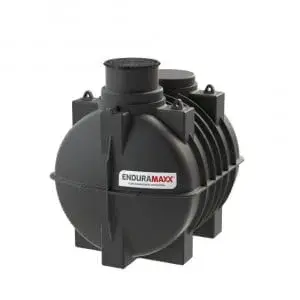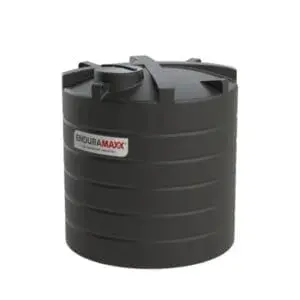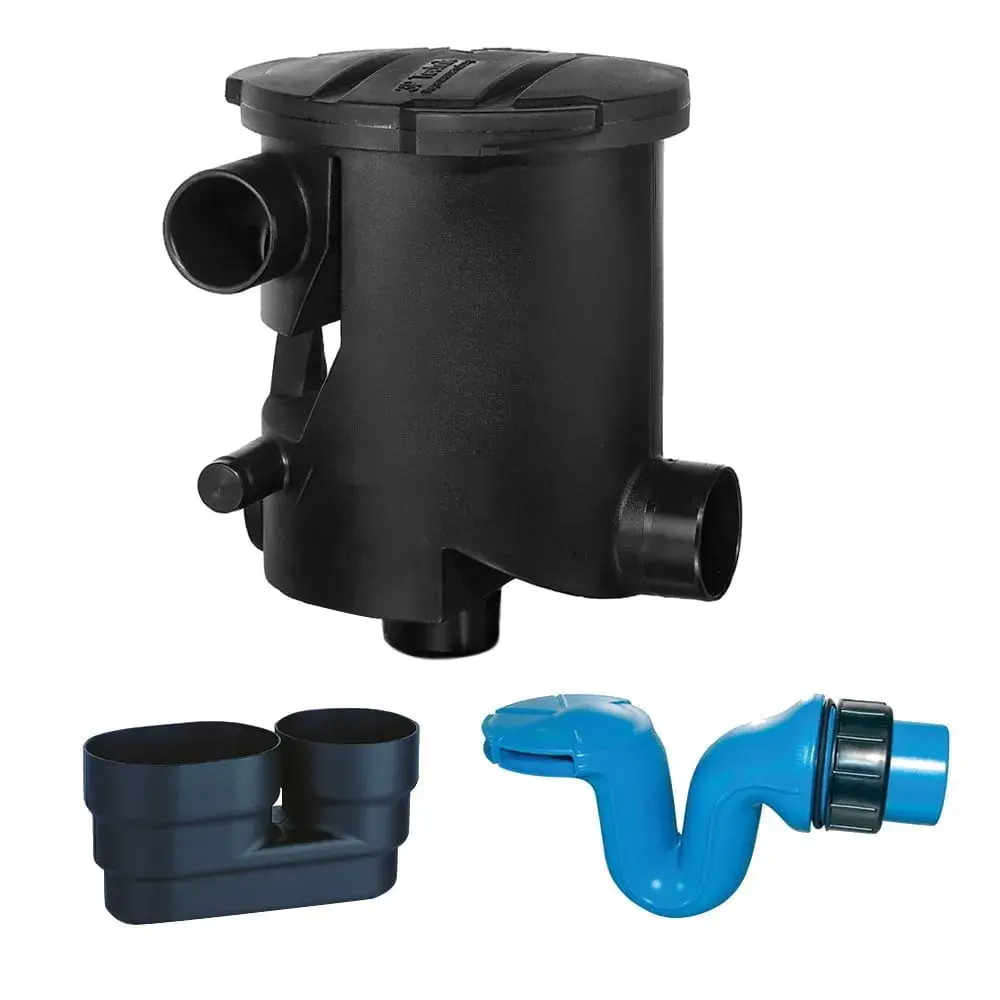In order that your new polyethylene vertical water storage tank is installed correctly giving you years of trouble-free use and to ensure that the manufacturer’s warranty conditions are properly complied with, it is essential that time and consideration are given to the proper installation of your new tank.
Most importantly it is imperative that the base upon which the tank is to stand has been properly constructed and is suitable for the dimensions and capacity of the tank for which it is intended. Don’t forget that depending upon the size of your tank, when full it could weigh up to 32 tonnes!
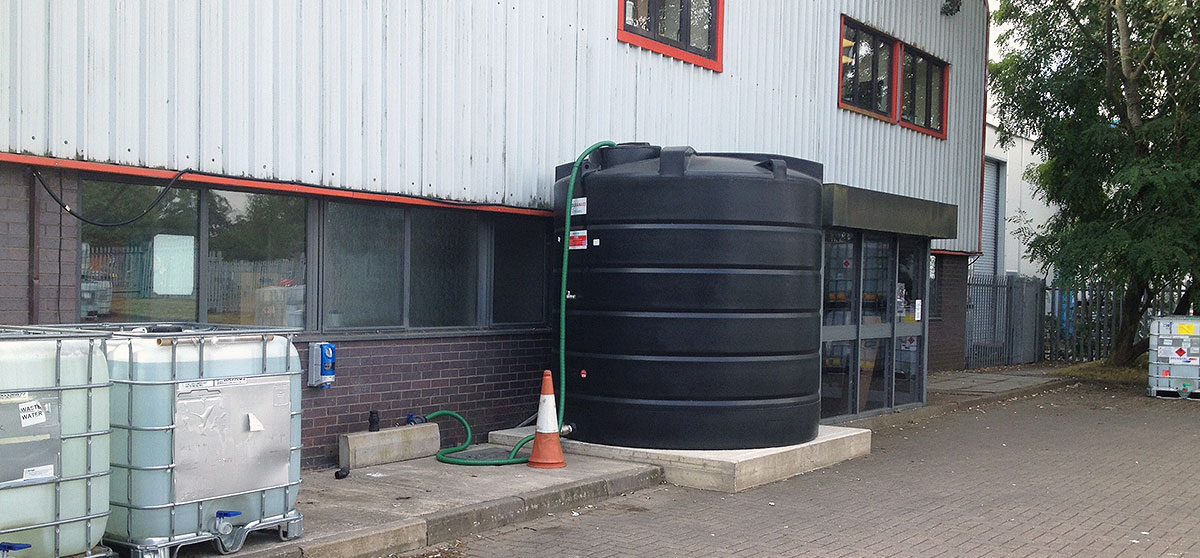
The base material should be constructed of reinforced concrete which must be level and flat in all directions, the diameter of which must exceed at least 600 mm over that of the tank’s base dimensions. The base upon which the tank is to sit shall be free from rocks, stones or other sharp objects that may damage the tank and should be protected so that no erosion can occur to the base through washout or other factors. The thickness of the concrete base will be dependent upon the capacity and dimensions of the tank; for tanks up to 2,500 litres it should be a minimum of 4” (102 mm); 2,500 litres to 10,000 litres, 6” (152 mm) in depth is recommended and for tanks, with a capacity of over 10,000 litres the base depth must be at least 8” (204 mm). Don’t forget to make sure that you have left sufficient room around the tank once it has been installed to allow for maintenance etcetera.
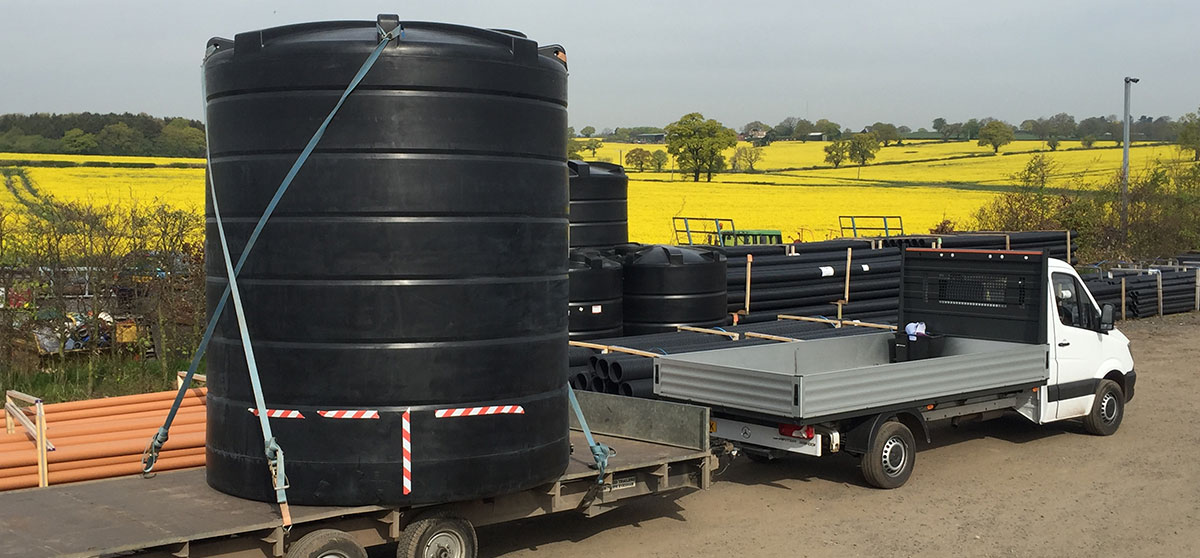
Upon receipt of your tank avoid damage to its fittings when unloading it from the transporter and try to set it down on a smooth debris free area. Do not allow the tank to either rest upon or rollover any of its fittings. In fact, do not roll the tank whether it has factory-supplied fittings or not. It is advisable to flush out the tank prior to fitting any pipework in order to remove any dirt or foreign debris.
Be aware of the type of fittings used on your tank. Hand tighten plastic bulkhead fittings. If these are over-tightened, the fittings may leak. It is important that fittings, valves, pipes and other accessories are fully supported. Fittings and tank attachments should not carry any weight. A flexible hose of at least 12” in length should be installed between the tank outlet and any subsequent pipework. This will avoid strain on the tank, fixed pipework and prevent leakage. All rotationally moulded tanks will expand and contract as they are filled and emptied. The connection between any fixed pipework and the tank (or tank outlet) as described above will allow for this movement.
Where the tank is fitted with welded feet to enable the tank to be secured to the ground, the fixing method between the feet and the ground should allow for both vertical and horizontal movement.
Test your installation by filling the tank with water before you put the unit into use. Verify the integrity of the tank and its fittings and always use your tank only for the purpose for which it was created. Do not apply contents under pressure or create a vacuum unless the tank is specifically rated for that use. Make sure that the materials you store in the tank are appropriate for the properties of the tank, fittings, gaskets and accessories.
Regular maintenance of your tank, its fittings and support base will ensure that your tank gives you years of trouble-free use.
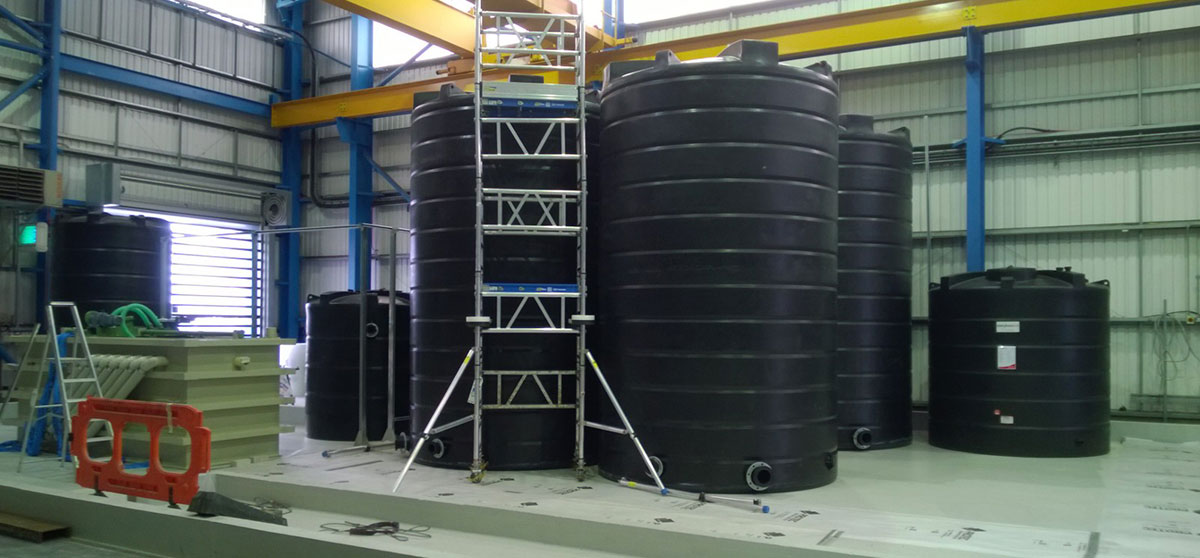
For those wishing to avail themselves of our tank installation service (Enduratank are working together with a number of independent tank installers) or for further information or specialised advice, call our support line on 01778 562810.

Posts By Topics
- Blog (303)
- Chemical Storage Tanks (118)
- Chemical Dosing Tanks (114)
- Chemical Tanks (114)
- Water Tanks (58)
- Rainwater Harvesting Tanks (43)
- Vertical Rainwater Tanks (31)
- Vertical Storage Tanks (31)
- Cone Bottom Tanks (19)
- Conical Cone Tanks (18)
- Rainwater Harvesting (17)
- Water Bowsers (15)
- Horizontal Tanks (14)
- Potable Water Tanks (13)
- Farming (9)
- Case Studies (8)
- Industrial Storage Tanks (7)
- Liquid Fertilser Storage Tanks (6)
- WRAS Approved Potable Tanks (6)
- Wine and Beer Production (6)
- Horizontal Transport Tanks (5)
- Microbrewery (5)
- Rainwater (5)
- Category 5 Break Tanks (4)
- Cider Production (4)
- Mixer Tanks (4)
- Molasses Tanks (4)
- Polyethylene tanks (4)
- Rainwater Filter Kits (4)
- SPECIALIST & BESPOKE TANKS (4)
- Bunded Tanks (3)
- Slimline Tanks (3)
- WRAS Approved (3)
- Clarification Tanks (2)
- Crosslinked Polymer Tanks (XLPE) (2)
- Fertiliser Tanks (2)
- Sump Tanks (2)
- Tank Installation (2)
- Water Butt (2)
- underground water tanks (2)
- ACCESSORIES & FITTINGS (1)
- ATV & UTV SPRAYING UNITS (1)
- Above Ground Effluent Tanks (1)
- Bespoke Tank Frames (1)
- Category 5 Turret (1)
- Caustic Soda Tanks (1)
- Closed Top Bunded Tanks (1)
- Craft beer (1)
- Effluent Tanks (1)
- Enduramaxx (1)
- Ferric Chloride Tanks (1)
- Fire Safety Regulations (1)
- Fire Sprinkler Water Storage Tanks (1)
- Industrial Water Tank (1)
- Open Top Bunded Tanks (1)
- Open Top Cone Tanks (1)
- Open Top Vertical Tanks (1)
- Polyethylene Potable Water Tanks (1)
- Polyvinylidene Fluoride (PVDF) Tanks (1)
- Polyvinylidene Fluoride Tanks (PVDF) (1)
- Pressure Washers (1)
- Pro Series Spot Sprayers (1)
- RWH (1)
- Sodium Hydroxide Storage Tanks (1)
- Sprayer Fill-up Tanks (1)
- Uncategorised (1)
- liquid fertiliser tank (1)
Sign up to the newsletter
enduramaxx.marketing
Related Posts
Plastic Rainwater Tanks To Counter Water Abstraction Limits
Water was high on the agenda at this year’s Cereals event. As reported by Farmers Weekly, speaking...
Northern Ireland Water Supply: Vertical & Horizontal Tanks
It’s a topic that just doesn’t seem to go away, and that’s water supplies in farming. As reported...
Taking Advantage Of The Wet Summer: Food Safety To Rainwater Harvesting
Although the UK’s wet summer may have affected crops up and down the country, the wet weather is...
Related Products
From £1,080.00 inc. VAT
£900.00 exc. VAT
From £1,344.00 inc. VAT
£1,120.00 exc. VAT
From £768.00 inc. VAT
£640.00 exc. VAT
£480.00 inc. VAT
£400.00 exc. VAT



